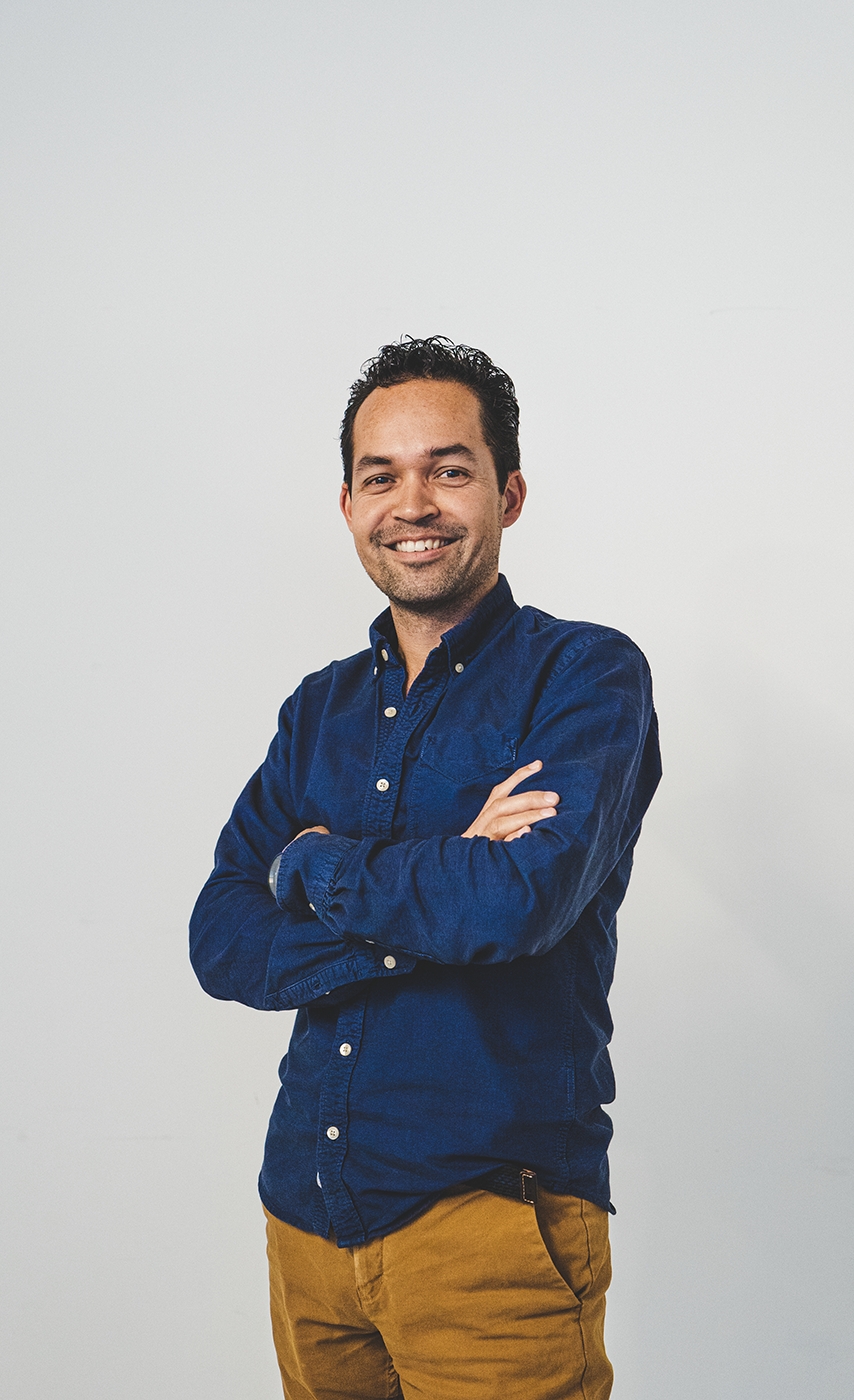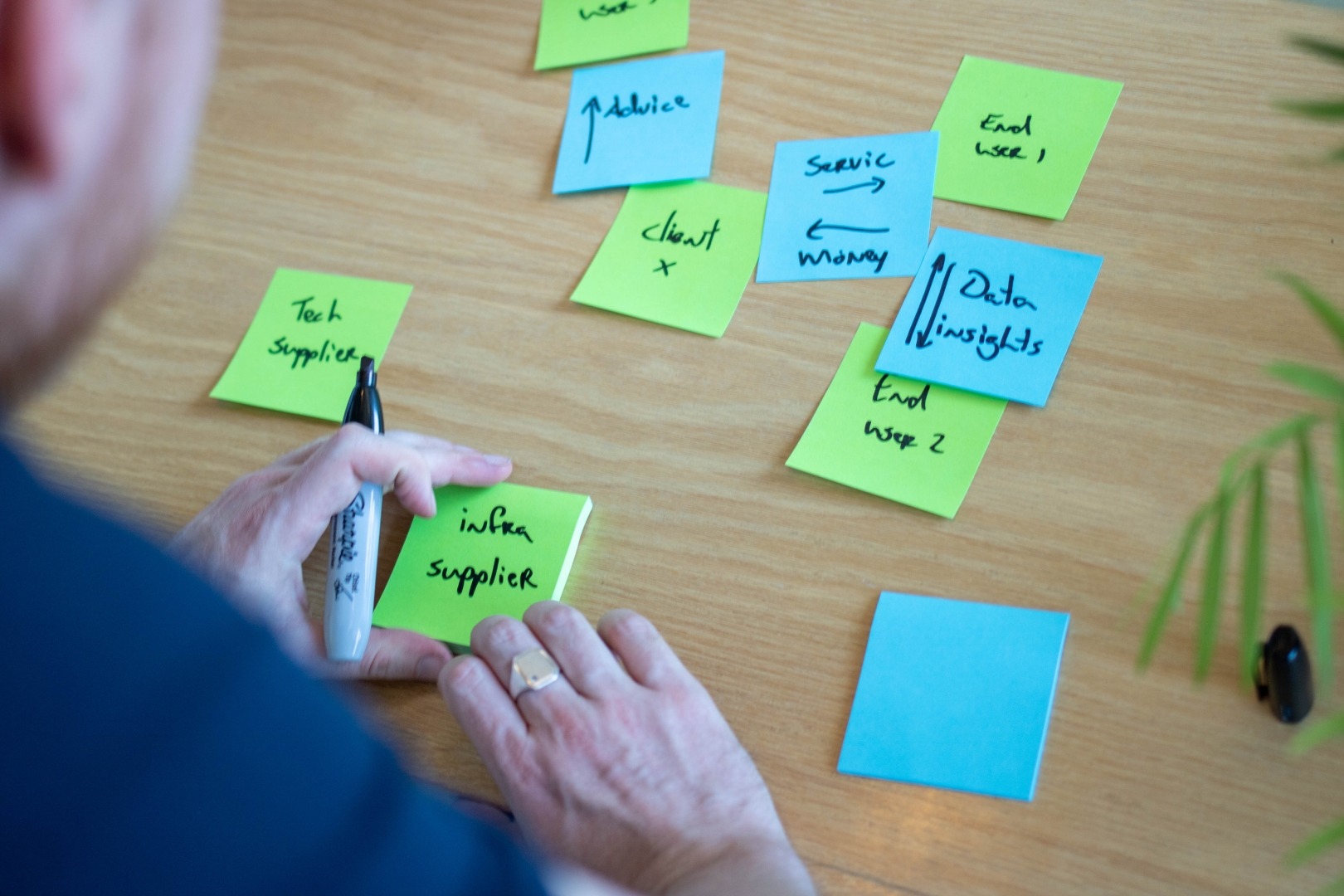IoT and Data transforming maritimeThe maritime sector
- Internet of Things
- Data Science
- Transformation

Menu

Aug 7, 2023
8 min

Rogier Stroband
In construction and engineering, innovation goes beyond IT updates; it requires a mindset shift. Traditional planning, known as the "waterfall" method, may be slow for digital construction innovation. Enter the Design Sprint a faster, more efficient approach. This blog clarifies Design Sprints, detailing their impact on digital innovation processes and offering valuable insights for implementation
According to Toni Sfirtsis, approximately 80% of new initiatives/innovations fail. The reason? Customers or end-users of the new service or product fail to see its added value because it doesn't effectively solve a problem for them. This results in the new innovation being either partially or not at all utilized. Therefore, new digital products or services need to be brought to the attention of the "real" users as early as possible during the development process to test and gather feedback. A Design Sprint is a structured process to develop a working prototype in five days. This can involve improving an existing product, developing a new concept, or solving a challenge. Previously, such projects took months to arrive at a working solution. The Design Sprint method reduces the time to deliver a working product to just five days and was developed by Jake Knapp of Google.
The essence of a Design Sprint is "validation." Ensure that the end-user is involved in the process so that the end product helps them and makes an impact.
In his book "Sprint," Jake Knapp compares a Design Sprint to a perfectly orchestrated heist. Similar to Ocean's Eleven, each team member brings their own expertise crucial to the collaborative approach. The more disciplines at the table, the better, but with a maximum of eight, as more can be counterproductive. Depending on the business case, the following composition is utilised:
The Decision Maker: Often the CEO or a manager with authority, present on Monday and Tuesday for crucial decisions.
The Financial Expert: The CFO or a business development manager ensuring the financial aspect of the innovation.
The Representative: Bringing the voice of the end-user to the table, a person closely associated with the product.
The Techie: A director or programmer from the technical field, knowledgeable about technical feasibility for development sprints.
The Designer: The specialist shaping the product, such as a designer or product manager.
The Troublemaker: A disruptive thinker adding dynamics to the Design Sprint, challenging ideas from their own discipline.
Additionally, two designers and a UX researcher are required for support on the testing day. Since a Design Sprint is primarily a concept exploration, the technical details are limited to what is feasible. In situations where logistics or systems determine the business model, a system expert may be necessary. The composition is not strictly one-to-one from the handbook, much like the schedule.

The original Google Design Sprint spans five intensive days. However, this leaves no time to convey the results to management or the client. The following schedule allows for that:
Monday: In the morning, insights are gained by consulting experts and defining the Design Sprint's goal and route for the week. In the afternoon, individual sketches are started and developed into a mini-story, visually representing the idea without additional explanation.
Tuesday: On the second day, a choice is made from the sketches, and a direction is chosen. In the afternoon, the concept is further developed into a storyboard, defining the prototype.
Wednesday: This day is for creating the prototype. Tasks are assigned based on roles, and in the afternoon, a trial run is conducted for user testing, with room for final improvements.
Thursday: The fourth day is for testing the prototype with external users. Ideally, six people are invited for this, with five providing sufficient results. The extra person serves as a backup in case someone doesn't fit the target audience or provides insufficient feedback.
Friday: This day is free to involve others in the process, share and process the learned insights, or start a new iteration. The four-day Design Sprint requires that the business goal is known in advance.
The facilitator guides the entire process, ensuring all deadlines are met. This person assembles the team, prepares, steers or parks discussions, and ensures further follow-up. Three tasks are essential for an optimal Design Sprint:
Thorough Preparation: A Design Sprint involves top-level collaboration. Spending an intense week together requires a consideration of snacks, good (but not too heavy) lunches, and regular breaks. Prepare the space and ensure there is no need to change venues in the middle, as that can be inconvenient.
Clear Communication: Properly instructing team members beforehand helps manage expectations better. Especially for those participating in a Design Sprint for the first time, a sprint brief sets the agenda and outlines the daily goals. During the Design Sprint, the facilitator maintains structure and time, allowing participants to focus on the tasks.
Steering Group Dynamics: A project planner who is normally not heard by the CEO has every opportunity to contribute in a Design Sprint. Various tools and exercises collect and appreciate everyone's input. The facilitator can redirect or end unfocused discussions and ask for input from a specific team member. In this role, the facilitator can even challenge the CEO when pushing their agenda too forcefully. A Design Sprint must be a democratic process to generate fresh ideas and a strong outcome.

With the fifth day dedicated to the handover, the facilitator ensures that the results are presented, and follow-up is guaranteed. The next step depends on the business case. This could be a new Design Sprint, starting the development of the new innovation, or a Sprint 0. Sprint 0 precedes the first development sprint and aims to extract all design requirements from the business idea. You establish the principles in terms of target audience and objectives, build the project's skeleton, create design assets, and develop the initial user stories. These are the building blocks for launching the first development sprint successfully without waiting for input.
A Sprint 0 is not about assembling a team, building infrastructure, or adding items to the backlog. It defines the business idea, allowing the development team to tackle a concrete problem area immediately. In short, Sprint 0 is the homework that follows a Design Sprint.
As an example of what a Design Sprint can achieve for companies in the construction sector:
Developing a 'customer portal' for clients without clarity on its value, the information sought, or the best way to present it. A Design Sprint can be used to test with clients whether they need a portal and which functionalities and data should be displayed, determining if it's worthwhile before actual development.
Many organizations use mobile apps developed for specific purposes. For instance, international maritime contractor Van Oord uses an app as a project progress dashboard to inform customers and stakeholders in real-time about the status. Check out our Van Oord Case here
Do you want to know how Label A can assist you in maximizing the numerous possibilities of digital transformation and information provision? We would love to get to know you! For more information about our services and solutions, please contact Rogier Stroband.

Rogier Stroband
Commercial Director

